Abstracts
Keynote: Architecting Software-Defined Vehicles Through Model-Based Design
9:45–10:15
The development of software-defined vehicles demands processes that can help decouple software from hardware, design self-contained apps for easy updates, and automate software build and testing, while still ensuring the consistency and traceability required for software quality, safety, and security.
Model-Based Design offers distinct advantages that can help you go from software architecture conceptualization to component design and back up to software integration and testing–enabling higher quality and reliability of the final product. In this presentation, you’ll see how Simulink® is rapidly evolving to realize this vision. Recent investments have helped create an environment that accounts for major trends in service-oriented architectures, code-based component development, virtual testing, continuous integration, and much more.

Ramamurthy Mani,
MathWorks
Keynote: Establishing Model-Based Systems Engineering as a Core Electric Vehicle Design Process
10:15–10:45
Electric vehicle systems are much more complex compared to IC engine-based vehicles, due to the larger number or electronically controlled power components and the expectation of seamless integration with infotainment and connectivity systems. An integrated systems engineering approach, transcending the six dimensions of integration—mechanical, electrical, signal, control, heat transfer, and mass transfer—is needed to efficiently integrate the various components in an electric vehicle so that vehicle reliability, performance targets, and program timelines are met. Rigorous breaking down of system requirements to component requirements, decoupling of component requirements, and robust test case generation to test these requirements are three key elements of an effective system engineering process. Such a process will enable different engineering teams to pursue their designs in parallel with each other while avoiding costly mistakes due to integration errors as the prototypes are built. Mathematical modeling of the system components, their requirements, and the system control strategy in an integrated manner would best serve this. However, to fully utilize the benefits of model-based systems engineering, this process must be fully integrated into the overall vehicle engineering process.

Dr. Philip Jose,
Mahindra Last Mile Mobility

Prashant Rao,
MathWorks
Panel Discussion: The Transformative Journey of Software-Defined Vehicles with Model-Based Design
11:30–12:30
As software continues to drive significant innovations, the automotive industry is transforming itself to acquire the necessary skills and infrastructure to deliver vehicles that are connected, personalized, and updated over their lifecycle. This shift requires evolution in semiconductor technology, vehicle architecture, software development workflows, and collaboration among stakeholders to build an ecosystem. Join a well-curated panel discussion to explore aspects related to software-defined vehicles (SDVs) including:
- What are SDVs and what opportunities do they offer?
- How is vehicle architecture evolving for SDVs?
- How do AI, virtualization, and cloud-based workflows enable the development of SDVs?
- What is the role of Model-Based Design in accelerating the development of SDVs?
- How are organizations reorganizing and reskilling to achieve these goals?

Moderator: Vijayalayan R,
MathWorks
Developing EV Components Using Virtualization and Scaling to the Cloud
14:45–15:15
The rising demand for advanced battery technologies requires frontloading of battery development. In this talk, discover how to virtualize battery development by integrating high-fidelity battery pack models, including thermal and cooling systems. Then learn how to integrate this model into a virtual vehicle and scale the simulation in the cloud. While this talk uses a battery as an example, the workflow is applicable to the development of any other EV component.
Highlights:
- Create comprehensive battery pack models with thermal and cooling considerations
- Ensure model accuracy and performance through rigorous unit testing
- Integrate battery pack models effortlessly into the virtual vehicle framework
- Leverage cloud workflows for faster, resource-intensive simulations and testing
Machine Learning and Cloud for EV System Development
15:15–15:45
This presentation highlights the significance of integrating machine learning and cloud computing in the development of EV systems. During this session, we discuss:
- The rationale behind employing machine learning and cloud computing in EV system development.
- The benefits of utilizing machine learning and cloud resources in advancing EV systems.
- The hurdles and obstacles associated with the utilization of machine learning and cloud resources in the realm of EV system development.

Dr. Vivek Venkobarao,
Vitesco Technologies
Optimizing Electric Powertrain Performance Through System-Level Modeling
15:45–16:15
With electrification taking center stage in the mobility segment, the need for reliable high-performance electric powertrains with shorter development times has become even greater. Model-Based Design is a preferred approach to improving product quality and achieving a faster time to market.
In this presentation, we discuss how a system-level model helps us understand component-level requirements and interactions between the components. The team utilized insights to create component-level models using Simulink® and Simscape™. These models were then combined to analyze system-level details and optimize performance, range, and cost.
The presentation covers the following points:
- Understanding system architecture to comprehend interactions between components and their specifications/sizes, including trade-off studies.
- Using Simulink and Simscape to model individual components such as motors and batteries.
- Integrating the component models and combining them with environmental and driver models to optimize system performance and range by changing the gear ratio.
- Testing and validating system performance.

Balasubramani Krishnamurthi,
Simpson & Co. Ltd.
Master Class: Driving Efficiency and Performance Using Motor Control Workflows for Electric Vehicles
16:45–17:45
In this master class, explore the latest advancements in motor control algorithm design and deployment, specifically in the context of vehicle electrification. These algorithms play a crucial role in regulating performance characteristics such as speed and torque. The session will focus on highlighting the unique capabilities of these algorithms and providing an efficient process for their development and implementation.
Highlights:
- Motor Modeling and generating characteristics curves as a function of motor parameters
- Using MTPA/field-weakening algorithms to meet the torque and speed requirements
- Validating motor requirements and redesigning the motor based on a standard drive-cycle test
- Using Field Oriented Control Autotuner block or PID Controller block for interactive control loop gain tuning
- Generating and verifying the code with static code analysis tools
- Deploying the algorithm to the hardware and verifying rate-monotonic/control loop execution time
Closed-Loop Testing of ADAS Systems Using dSPACE RTPC with MATLAB and Simulink
14:45–15:15
Advanced driver-assistance systems (ADAS) are an ever-evolving technology in the automotive domain that aim at improving the safety and comfort of the driver. Efficient, scalable, and diverse development and validation techniques are used to ensure that ADAS systems behave as intended. Real-time embedded systems housing ADAS applications need to be tested in a real-time environment to bring in timing and safety criticality. In this session, explore how Tata Elxsi has accomplished real-time ADAS validation using RoadRunner, MATLAB®, and Simulink®. The first part of the presentation showcases how camera-based ADAS features can be tested in a real-time embedded platform using the concept of frame grabber and frame generator. Over the air simulation setup and monitor camera setup will also be explained, where the entire camera ECU is brought under the scope of validation. The second part of the presentation covers how rapid control prototyping (RCP) testing can be implemented for an ACC-AEB algorithm in a real-time platform. dSPACE® SCALEXIO and the relevant real-time compatible toolboxes from MathWorks are also used. The ACC-AEB controller algorithm and vehicle dynamics logic are deployed for real-time execution in dSPACE SCALEXIO, while the scenario and sensor simulation in Simulink along with the scenario animation are deployed in the test PC. See the benefits of using MATLAB and Simulink products to achieve real-time testing of ADAS systems.

Dr. Jihas Khan,
Tata Elxsi

Chandni S. Vijay,
Tata Elxsi

Hari Priyadarshini A.,
Tata Elxsi

Dr. Rishu Gupta,
MathWorks
Open Simulation Interface (ASAM OSI) Using RoadRunner for ADAS ECU Validation
15:15–15:45
ASAM OSI® (Open Simulation Interface) is a generic interface based on Google’s protocol buffers for the environmental perception of automated driving functions in virtual scenarios. It is a specification for interfaces between models and components of a distributed simulation. ASAM OSI is strongly focused on the environmental perception of automated driving functions.
In this presentation, explore the capabilities of ASAM OSI in facilitating the simulation of advanced driver-assistance systems (ADAS) electronic control units (ECUs) within a virtual environment. Learn how constructing simulation models around ASAM OSI achieves a plug-and-play functionality that seamlessly integrates with any environmental simulator. This approach allows APTIV to develop a versatile platform capable of meeting the diverse requirements of customers while minimizing the need for extensive customization and enabling faster delivery. See how you can use RoadRunner as a tool that generates scenarios and creates ASAM OSI files, which are subsequently utilized for simulation and validation of the models and ECUs.
Scenario-Based Cosimulation of Autonomous Systems Using RoadRunner and CarMaker
15:45–16:15
Automated driving features are a combination of multiple complex systems. Testing and validation of these features requires millions of kilometers of scenarios; however, this is not feasible to test on on-road systems. In view of different levels of automation, there is a dire need of a modular and scalable platform that allows X-in-the-loop simulation.
Having a configurable vehicle model used for software-in-the-loop testing provides substantial advantages compared to the physical test drives. It enables automated, efficient, and extensive testing methods with minimal risk and costs for time and equipment.
The current simulation framework allows you to create test scenarios with predetermined traffic behavior. However, there is a need for systematic usage of scenarios for testing and validation of automated driving systems, needed particularly in modeling the driving environment and traffic dynamics. This allows a realistic, robust, and usable environment of the test scenarios.
In this talk, learn about a cosimulation framework between RoadRunner from MathWorks and CarMaker from IPG and how to use it with a third-party simulation framework for validation. See how to bring realistic traffic models into the driving environment to ensure all complex and corner case scenarios are covered during the validation. This cosimulation platform allows you to test millions of kilometers by combining vehicle simulation with virtual simulation software environments.
Master Class: Scenario-Based Virtual Validation for ADAS Features
16:45–17:45
Automated driving spans a wide range of automation levels, from advanced driver assistance systems (ADAS) to fully autonomous driving. As the level of automation increases, the need for testing these features on multiple scenarios becomes important and the testing requirements increase multifold, making the need for modeling and simulation more critical. Creating virtual environments in the form of scenes and scenarios along with a testbench is important to achieve effective simulation.
In this session, learn how RoadRunner and RoadRunner Scenario™ can help you design scenarios for simulating and testing automated driving systems. See how to incorporate scenarios in a closed loop with algorithms for testing automated driving systems.
Discover how to:
- Interactively author scenarios by placing vehicles and paths, defining logic, and parameterizing scenarios
- Export and import scenario and trajectories to ASAM OpenSCENARIO®
- Programmatically create scenario variants from seed scenarios
- Set up scenario-based validation of ADAS features like highway lane change
- Set up a test automation framework for virtual simulation

Munish Raj,
MathWorks
The Evolution of Simulink for Service-Oriented Architecture (SOA)
14:45–15:15
The automotive industry has embraced a service-based approach, known as service-oriented architectures (SOA), to design applications for software-defined vehicles (SDVs). SOA introduces a paradigm shift, emphasizing high reusability, streamlined updates, and reduced hardware dependencies in software development. It revolves around the concept of dynamic service discovery, publisher, subscriber, and runtime reconfiguration. The concept of SOA has been widely incorporated into industry standards, including AUTOSAR Adaptive, DDS, and ROS.
Join an insightful presentation on the evolutionary journey of Simulink® in developing SOA-based applications, highlighting the following key capabilities:
- Advanced Simulink semantics for service development
- Software architecture for SOA, AUTOSAR Classic, and AUTOSAR Adaptive
- Seamless migration from traditional applications to SOA and AUTOSAR Adaptive applications

Shwetha Bhadravathi Patil,
MathWorks
Cloud-Native Development and Model-Based Approaches in Software-Defined Vehicles
14:45–15:15
The future of automotive technology is cloud native and software defined. This evolution presents challenges and opportunities to leverage cloud-native capabilities from software development to safe and secure operations, as well as model-based approaches to ensure reusability, reliability, and quality. This presentation explores how AWS and its partner ecosystem’s automotive-specific solutions for connected and software-defined vehicles can be a value multiplier for automotive OEMs and their ecosystems. We discuss how model-based development and design can be integrated with cloud-native development and deployment, creating a powerful framework for developing and scaling software-defined vehicles. We also explore the benefits of leveraging cloud-native and model-based approaches, including increased efficiency, performance, agility, and innovation.

Indranil Bhattacharjee,
Amazon
AI Use Cases in Powertrain Development
15:45–16:15
Artificial intelligence is employed in a wide range of fields and applications. Learn how the use of AI has been investigated in the current effort to speed up the development of powertrains. The areas of applicability include:
- Enhancing emission robustness by the statistical creation of a worst-case cycle and implementation for bs6.2 development.
- Using shallow neural network techniques to create virtual sensors that can replace genuine ones for cost and maintenance advantages.
Master Class: Accelerating Development for Software-Defined Vehicles Using CI/CD
16:45–17:45
In this session, explore the application development and integration of reference workflows into a continuous integration (CI) and continuous delivery (CD) pipeline, and how to streamline the software development lifecycle with a Model-Based Design approach.
The key takeaways from this master class will be:
- Using model-based development for service-oriented architectures
- Setting up and automating Model-Based Design verification and validation using CI/CD
- Deploying software-defined vehicle applications
- Setting up a test automation framework for virtual simulation

Abhisek Roy
MathWorks
Abhisek Roy is a senior application engineer at MathWorks India, specializing in modeling, control design, and automation. With a strong focus on the automotive industry, he has worked closely with customers to address their system simulation, control system design, and robotics challenges.
Abhisek’s expertise lies in various aspects of the automotive field, particularly powertrains, vehicle dynamics, and calibration workflows. He has delivered and supported multiple customer projects in these domains, showcasing his ability to provide tailored solutions to meet specific needs.
He has an M.Tech. degree in electrical engineering from the Indian Institute of Technology, Madras, specializing in control systems and robotics, and a B.Tech. in electrical engineering from Jadavpur University, Kolkata. He is currently pursuing an executive M.B.A. from the Indian School of Business.

Sree Varshini Bhattu Saraswathi
MathWorks
Sree Varshini Bhattu Saraswathi is an automotive application engineer at MathWorks working closely with customers in the areas of electrification, virtual vehicle modeling, and simulation. She has six years of industry experience in vehicle dynamics, multibody dynamics, NVH, and simulation. Prior to joining MathWorks, she worked at Ford Motor Company, specializing in multibody dynamics. Sree holds a bachelor’s degree in mechanical engineering and a master’s degree in motorsport engineering from Oxford Brookes University, UK.

Rahul Choudhary
MathWorks
Rahul Choudhary is a principal application engineer at MathWorks India, specializing in system modeling and control design. He has over 12 years of experience in power electronics control, motor control, multidomain modeling, and real-time simulation. Before joining MathWorks, Rahul worked as a control engineer at Eaton India Engineering Centre, where he was involved in developing prognostics and health monitoring algorithms for proof-of-concept projects for their electrical products.
He holds a master’s degree in systems and control engineering from Indian Institute of Technology Bombay, Mumbai, and a bachelor’s degree in electronics and instrumentation engineering from Institute of Engineering and Technology, Lucknow, India.

Ananth Kumar Selvaraj
MathWorks
Ananth Kumar Selvaraj is an engineering manager at MathWorks India, specializing in power electronics and motor control. He and his team members are working in Model-Based Design workflows and tools for developing motor control solutions. Ananth brings over 20 years of experience in embedded and control design from industrial and automation domains. Prior to joining MathWorks, he worked for National Instruments, Schneider Electric, and KONE Elevators as an expert in embedded and control engineering for power electronics and motion control. Ananth holds a bachelor’s degree in electrical and electronics engineering and master’s degree in mechatronics engineering.

Dr. Rishu Gupta
MathWorks
Rishu Gupta is a principal application engineer at MathWorks India. He primarily focuses on automated driving and artificial intelligence applications. Rishu has over nine years of experience working on applications related to visual contents. He previously worked as a scientist at LG Soft India in the Research and Development unit. Rishu holds a bachelor’s degree in electronics and communication engineering from BIET Jhansi; a master’s in visual contents from Dongseo University, South Korea, working on the application of computer vision; and a Ph.D. in electrical engineering from University Technology Petronas, Malaysia.

Munish Raj
MathWorks
Munish Raj is an application engineer for automated driving at MathWorks. His areas of expertise are in scenes and scenario creation for automated driving, developing and testing perception, planning and control algorithms, and autonomous driving. He has an engineering degree in electronics and communications from VIT University, Vellore.
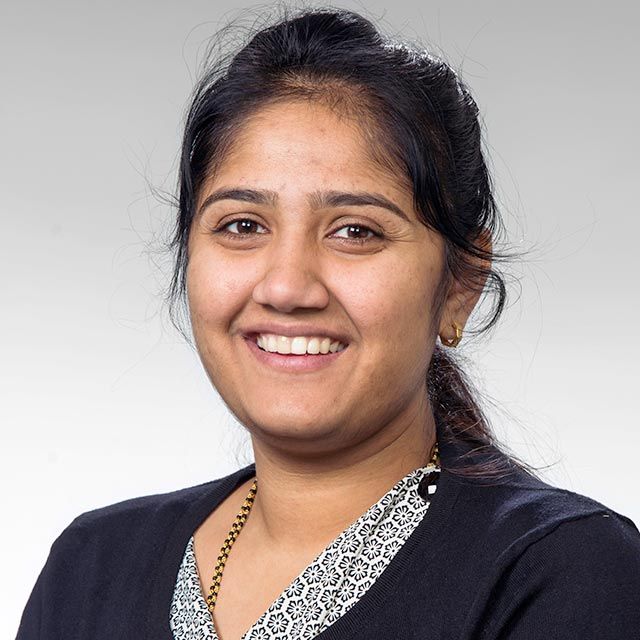
Shwetha Patil
MathWorks
Shwetha Bhadravathi Patil is a senior product manager at MathWorks focusing on AUTOSAR, DDS, and Simulink code generation products. Before joining MathWorks, she worked as a software developer at Aptiv (formerly known as Delphi Automotive) on AUTOSAR-based projects and at Analog Devices Inc. as a technical marketing engineer for automotive video codecs. Shwetha graduated from Tufts University with an M.S. in engineering management and from Manipal University with an M.S. in automotive embedded systems.

Nukul Sehgal
MathWorks
Nukul Sehgal is a senior application engineer at MathWorks, where he leverages over a decade of software engineering experience as a technical strategist and SDV solution expert. He is a technology leader in SDV and SOA, guiding industries toward the adoption of the latest technology trends in software engineering. He is passionate about supporting customers with cutting-edge solutions in SDVs, SOA, embedded Linux, and high-performance computing (HPC). His deep knowledge encompasses cybersecurity, applied AI on embedded edge devices, cloud integration, and DevOps.
Nukul brings a proven track record of success, having previously led software engineering teams at Interface Microsystems. There, he spearheaded projects in ECU design, software and firmware development, and functional testing. His expertise extends to complete SDLC methodologies and adherence to industry standards like ASPICE, ISO 26262, and ISO 21434.

Vamshi Kumbham
MathWorks
Vamshi Kumbham is a senior application engineer at MathWorks India specializing in modeling, simulation, automatic code generation, and verification and validation. He works closely with customers across domains to help them use MATLAB and Simulink in their workflows. He has over 12 years of industry experience in design and development of software applications in the automotive domain. He has been a part of the complete life cycle of automotive projects. Before joining MathWorks, Vamshi worked for Bosch as a senior software engineer and for Hyundai Motor India Engineering as assistant manager. He holds a bachelor’s degree in electronics and communication from Sri Venkateswara Engineering College.

Dr. Vivek Venkobarao
Vitesco Technologies
Vivek Venkobarao works in plant model development and vECU validations for charging technologies. He is also an expert in artificial intelligence applications to software controls. He has 11 granted patents in US, Germany, and India, and has published more than 30 papers in various international journals and conferences. Vivek has a Ph.D. in electrical engineering.
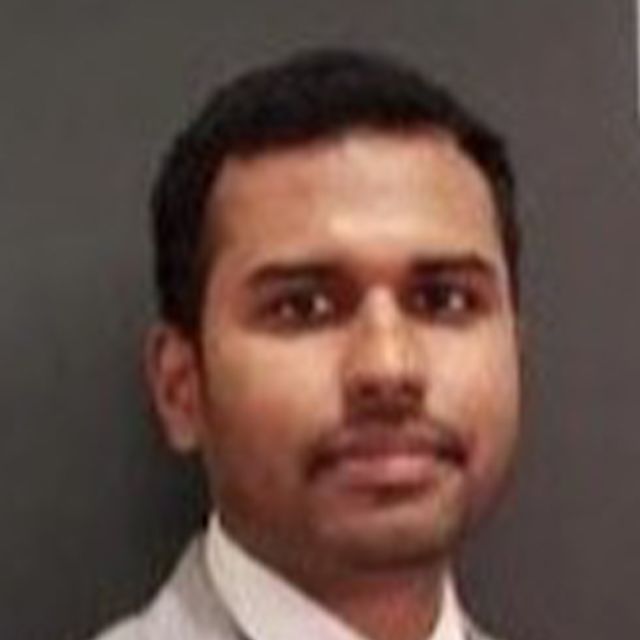
Balasubramani Krishnamurthi
Simpson & Co. Ltd.
Balasubramani Krishnamurthi oversees the electrification initiatives at Simpsons and is currently working on E-Drive design and development for automotive and agricultural applications. Balasubramani has a master’s degree in sustainable automotive engineering and 11 years of experience in powertrain design and development.
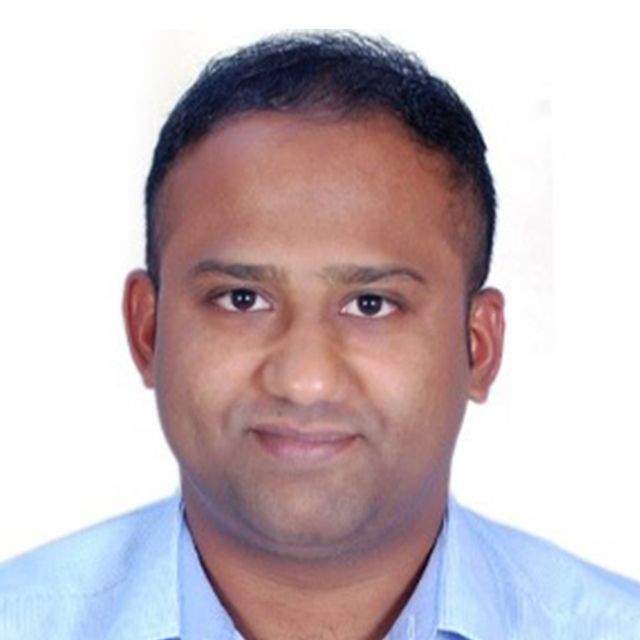
Ananthesh Shet
APTIV
Ananthesh Seth is an engineering team manager in Simulation and Systems at APTIV and focuses on providing virtual simulation solutions to the OEMs. He has been with APTIV for 12 years with profound knowledge of various generations of radar systems. His interests include signal processing, simulation, and AI. Ananthesh received his Bachelor of Engineering degree from B.M.S. College of Engineering, Bangalore, and is pursuing an M.Sc. in computer science (AI).

Naga Pemmaraju
MathWorks
Naga Pemmaraju is a product manager in autonomous systems at MathWorks. His focus areas include ASAM standards and interoperability, building scenes and scenarios from HD and SD Maps, and recorded sensor data for automated driving applications. He has been with MathWorks over 8 years helping customers adopt a Model-Based Design approach, and has over 16 years of industry experience working on product development, product marketing, and technical sales. Prior to joining MathWorks, he worked as controls engineer at Vestas Wind Systems, Northern Power Systems, and Caterpillar Inc. Naga holds a bachelor’s degree in electronics and control engineering from JNTU, Hyderabad, and a master’s degree in electrical engineering from Texas A&M University-Kingsville.

Deva Hanuma Kishore Naidu Avisineni
Bosch Global Software Technologies
Deva Hanuma Kishore Naidu Avisineni is a specialist in XIL (hardware-in-the-loop) and virtualization solutions at Bosch Global Software Technologies in Hyderabad. He has five years of experience in this field, and is an integral part of the Software and Digital Solutions (SDS) Group, an independent unit of Bosch Global Software Technologies (BGSW). This group is dedicated to delivering cutting-edge software and digital solutions to customers worldwide. As a member of SDS, Deva's primary responsibility is to assist in developing innovative solutions for global clients.

Indranil Bhattacharjee
Amazon
Indranil Bhattacharjee is an automotive solutions architect at AWS. He helps automotive customers build optimal cloud solutions with a special focus on automotive product engineering and R&D. Software-defined vehicle-based solutions are an integral part of this domain and he helps customers build these solutions on AWS. Indranil is based in Bangalore, India.

Padmavathi R
Mahindra & Mahindra
Padmavathi works at Mahindra & Mahindra as a principal engineer. She heads the VPS Group and is responsible for vehicle performance simulations, target setting, FE and range testing, and performance development. She is also in charge of benchmarking for all Mahindra cars and LCVs for all ICE and EV powered vehicles. Padmavathi has nearly 17 years of work experience in the M&M auto sector. She worked in the powertrain development area in the fields of engine performance simulations, after treatment systems, and new technology development for FE improvement. Her interests include numerical analysis, data analytics performance optimization, engine calibration optimization, virtual engine calibration, tool development, engine combustion, and CFD development. Padmavathi holds patent applications for developing new methods in engine fuel economy simulations, improvements, and benchmarking.

Jayanth Balaji Avanashilingam
MathWorks
Jayanth Balaji Avanashilingam works as a senior application engineer at MathWorks in the area of artificial intelligence. He primarily focuses on areas of data analytics applications involving time-series data. Jayanth has eight years of research and industrial experience, and has worked on developing AI, machine learning, and deep learning solutions for retail optimization, computer vision, natural language processing, and other application areas. Prior to joining MathWorks, Jayanth worked as a senior AI engineer at Impact Analytics, Bangalore.
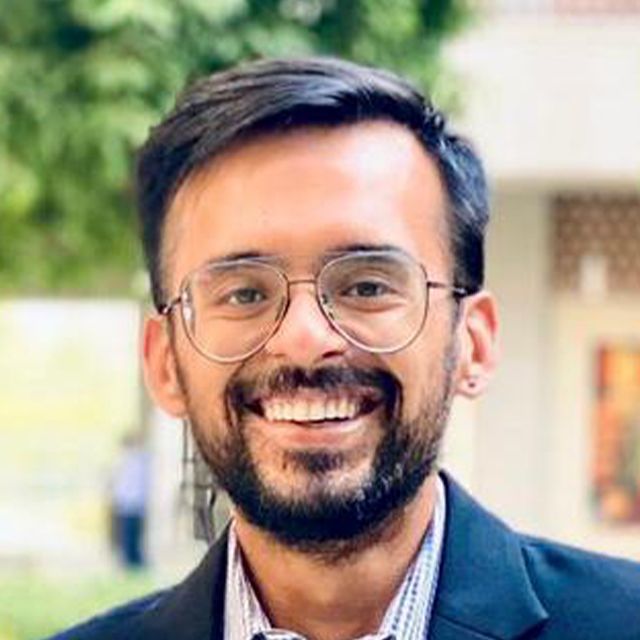
Rajat Arora
MathWorks
Rajat Arora is an automotive industry application engineer at MathWorks with a focus on verification and validation and code generation products. He has accumulated more than a decade of experience working in both the automotive and software industries. Before joining MathWorks, he worked at Magneti Marelli and Robert Bosch, where he led teams of engineers responsible for developing software for engine control, safety, and transmission systems. Rajat holds an M.B.A. from the Indian School of Business, Hyderabad, and a bachelor’s degree in electronics and communication engineering from Maharshi Dayanand University in Delhi/NCR.
LinkedIn Profile

Dr. Philip Jose
Mahindra Last Mile Mobility
Philip Jose has over 25 years of experience in electric powertrain design and development for heavy duty vehicles, passenger cars, three-wheelers, and two-wheelers. He led the development of electric powertrain system for series hybrid bus and fuel cell bus at Tata Motors. At Bajaj, he was instrumental in the design of electric powertrain for Chetak EV as well as indigenous development of electric powertrain components for the entire range of vehicles at Bajaj. Philip completed a B. Tech. in electrical engineering from IIT Madras and a Ph.D. in the same subject from the University of Minnesota.
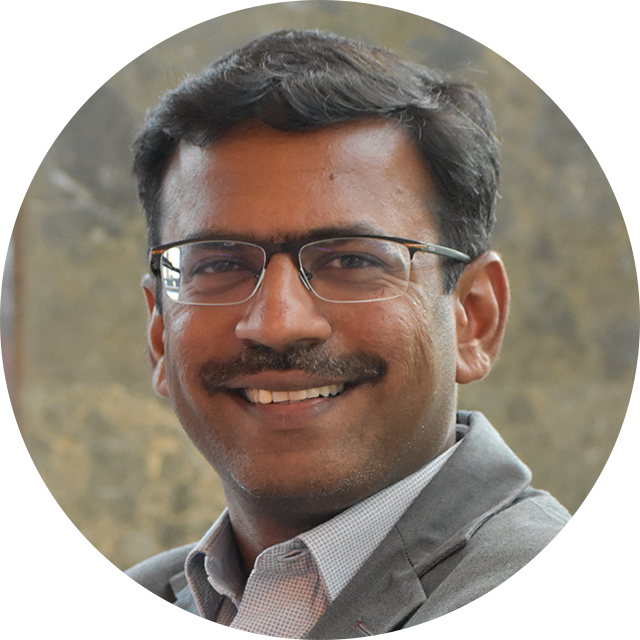
Vijayalayan R
MathWorks
Vijayalayan R heads automotive industry and location field application engineering at MathWorks India. He and his team facilitate the adoption of Model-Based Design, empowering customers to embrace next-generation technologies on their journey towards electrification, AI, and software-defined vehicle projects. Vijayalayan is part of the management committee of the SAE India Bangalore section and has 23 years of industry experience. Prior to joining MathWorks, he worked in embedded systems leadership at Cranes Software International Limited and as a Scientist B at the Gas Turbine Research Establishment. Vijayalayan holds a bachelor's degree from Manonmaniam Sundaranar University and a master's degree in control and instrumentation from IIT Madras.
LinkedIn Profile

Prashant Rao
MathWorks
Prashant Rao heads the Application Engineering team at MathWorks India. He and his team focus on helping customers across industry verticals and application domains to accelerate and reduce risk in their development processes through the usage of MATLAB and Simulink products. He has a wide exposure with customers ranging from large enterprises to startups spanning commercial, government, and educational organizations. Prashant is a regular contributor at industry forums, sharing his views around megatrends in technology and especially how artificial intelligence (AI) is enabling engineers and scientists to build smarter systems.
LinkedIn Profile
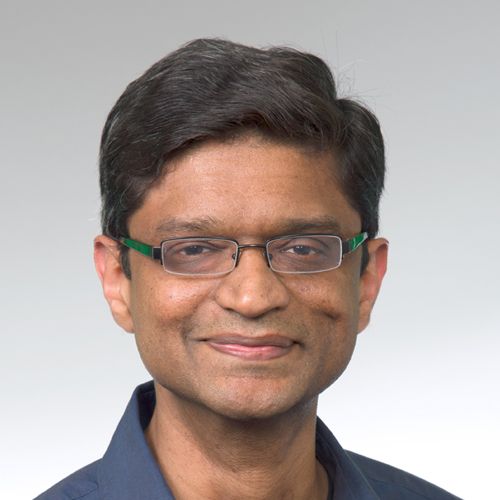
Ramamurthy Mani
MathWorks
Ramamurthy Mani is the engineering director responsible for enhancing the core language of Simulink with a special focus on system and software architectures and large-scale simulations. Mani started at MathWorks in 1998 in software development and has made several contributions to the modeling capabilities in Simulink, System Composer, and SimEvents. More recently, he and his team have been focusing on workflows for model-based systems engineering, modeling distributed software architectures, and multi-agent system-of-system simulations. Mani holds a Ph.D. in electrical engineering from Boston University.

Dr. Jihas Khan
Tata Elxsi
Dr. Jihas Khan is an expert in the field of autonomous driving and electric vehicles. He has over 12 years of experience in the simulation and validation of advanced driver-assistance systems, autonomous driving systems, and electric vehicles. His primary field of work and research includes the design and development of virtual test platforms for ADAS and AD, HIL testbench design and development, enabling left-shifting of AD ADAS EV validation, ensuring process compliance for virtual validation, tool development for increased test efficiency, test automation framework design, and ADAS/AD/EV system test execution.

Chandni S. Vijay
Tata Elxsi
Chandni S. Vijay has worked at Tata Elxsi for one year on MATLAB, Simulink, RoadRunner, Unreal Engine, and dSPACE for different ADAS applications. She has a master’s in robotics and automation.

Hari Priyadharshini A.
Tata Elxsi
Hari Priyadharshini A. has worked at Tata Elxsi for one year on MATLAB, Simulink, RoadRunner, Unreal Engine, frame grabbers, frame generators, and SCANeR for different ADAS applications. She has a master’s in robotics and automation.
Select a Web Site
Choose a web site to get translated content where available and see local events and offers. Based on your location, we recommend that you select: .
You can also select a web site from the following list
How to Get Best Site Performance
Select the China site (in Chinese or English) for best site performance. Other MathWorks country sites are not optimized for visits from your location.
Americas
- América Latina (Español)
- Canada (English)
- United States (English)
Europe
- Belgium (English)
- Denmark (English)
- Deutschland (Deutsch)
- España (Español)
- Finland (English)
- France (Français)
- Ireland (English)
- Italia (Italiano)
- Luxembourg (English)
- Netherlands (English)
- Norway (English)
- Österreich (Deutsch)
- Portugal (English)
- Sweden (English)
- Switzerland
- United Kingdom (English)











